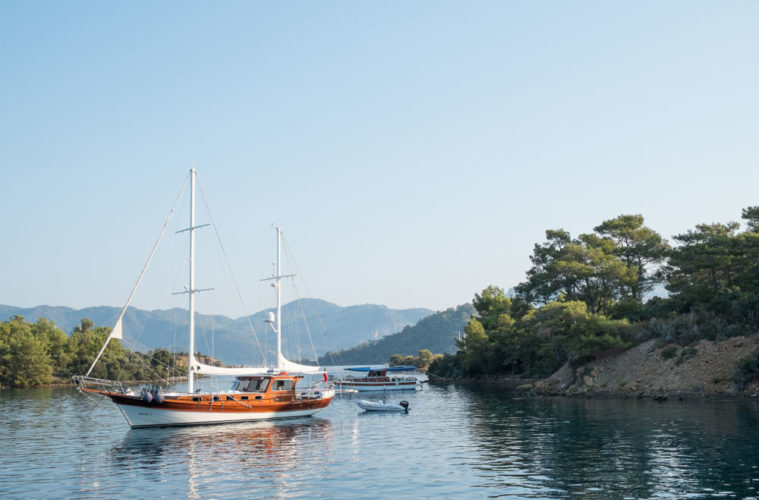Diana Wemyss and her family explore the tranquil turquoise waters of the Bay of Fethiye on Turkey’s Aegean coast. Discover what sailing in Turkey is like.

Last summer, we embarked on two weeks of blissful, fully-catered sailing in the beautiful, calm seas off the Aegean coast. We flew direct from Gatwick to Dalaman on the south-western coast of Turkey, landing late at night, starving and dehydrated.
YOU’LL ALSO LOVE: DESTINATION: BAZARUTO ARCHIPELAGO MOZAMBIQUE
We were grateful to meet an air-conditioned bus stocked with ice-cold water for the half-hour drive to Gocek. The bus was arranged by Gulgun, the owner of the hotel in Gocek where we would spend a couple of nights before boarding our gulet, a traditional wooden sailing boat.
YOU’LL ALSO LOVE: Destination: Mediterranean magic in Malta
Previously a mining town, Gocek was reinvented as a sailing destination with six yacht marinas, no buildings over two storeys permitted. It hosts pretty pedestrian walkways, boutiques and restaurants as well as ships chandlers, catering to the passing trade. Cascading bougainvillea and tall palm trees offset by impossibly blue sea instantly give the town an exotic atmosphere.
On Saturdays, there’s a large fresh produce market just outside town where you can enjoy just-off-the griddle pancakes and huge glasses of freshly squeezed orange juice. You can even buy locally made cotton shirts and shorts at amazingly low prices.
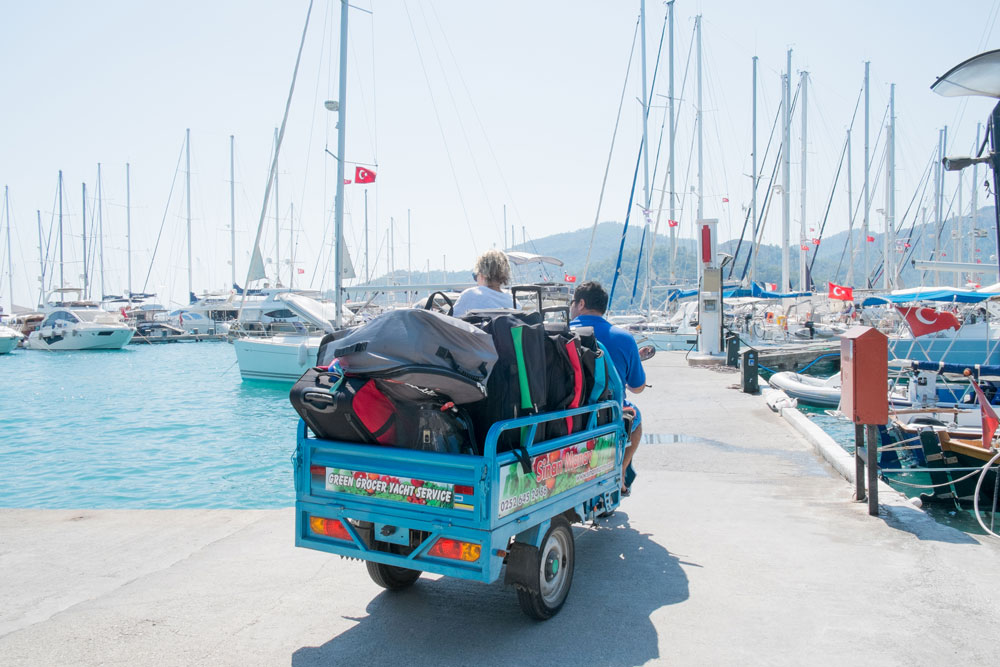
As we were a family of nine, with two large paddleboards to complicate things, Gulgun enlisted the help of the greengrocer around the corner with his little motorised delivery scooter to take our luggage to the harbour.
Gulets were developed from cargo vessels that plied their trade along this coastline centuries ago. Our boat, the Kasapoglu, was a beauty, 28ft long with six double cabins, all wood and blue canvas.
READ MORE: DESTINATION: COPENHAGEN
There’s nothing quite like the excitement of leaving harbour at the start of a journey, vying for the best cabin, meeting the captain, his wife and the crew, and finally sailing out into the bay watching civilization disappear. The true nature of our sailing adventure lay in the discovery of something unique and unchanged by tourism and sightseer dollars: the simple life of the people.
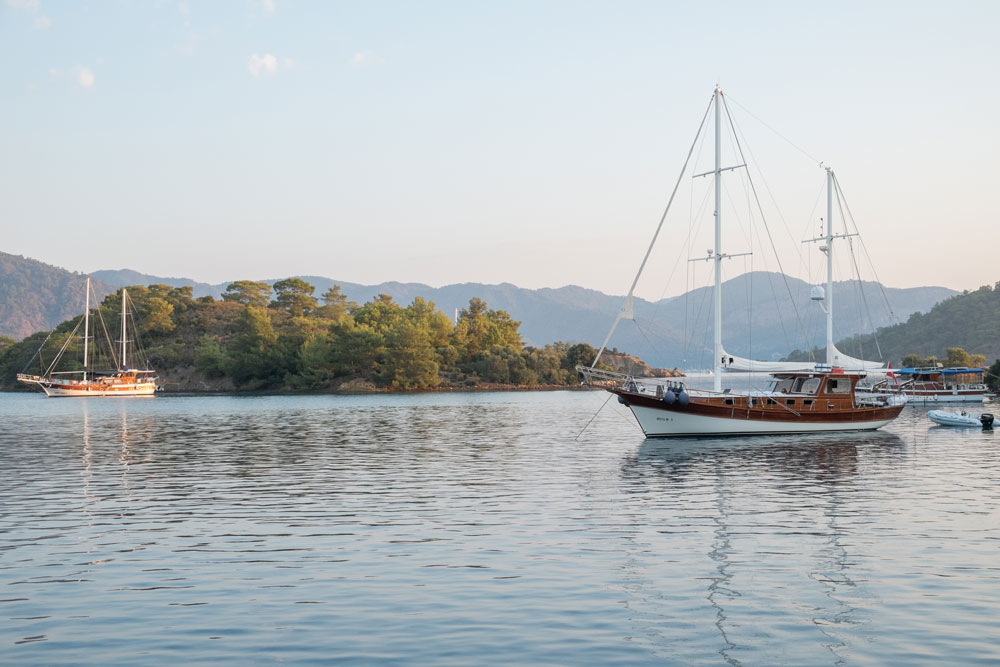
The captain, a very experienced sailor, could moor his boat within an inch of the harbour wall in lashing winds and heaving waves. He knew every bay and island, all the most secret coves with the clearest water and best swimming spots, and was adept at avoiding the overcrowded pleasure boats.
He liked to braai on deck with a little gas apparatus that he hitched to the railings. Meals were eagerly anticipated, mostly prepared by his wife in the tiny galley. Not only did she cook, she also produced the most exquisite beadwork necklaces and sarongs. She also collected bunches of Salvia pinnata from the islands. When anyone was out of sorts, she dished out salvia steeped in hot water, which appeared to cure just about anything from headaches and earaches, to upset stomachs.
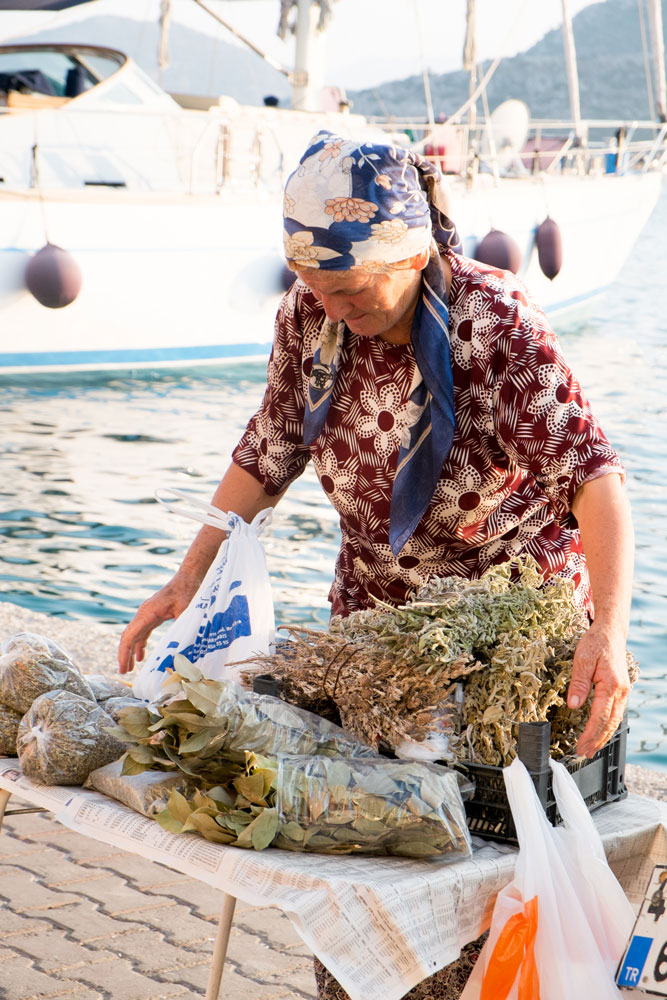
One beautiful bay or island followed the other, and our days took on a lazy routine of breakfast, a gentle motor to a new spot where we would drop anchor and swim, canoe or paddleboard until lunch time. After that, off we’d sail to the next sheltered bay ready for more swimming. Following afternoon tea was a good swim, then finally an evening braai.
Below deck, the heat was intense and the air-conditioning so loud that everyone opted to sleep under the stars. It did mean that, with the first rays of the sun, we were awake and ready to start the day.
Some enthusiasts tried a little fishing before breakfast and the first catches were greeted with huge cheers.
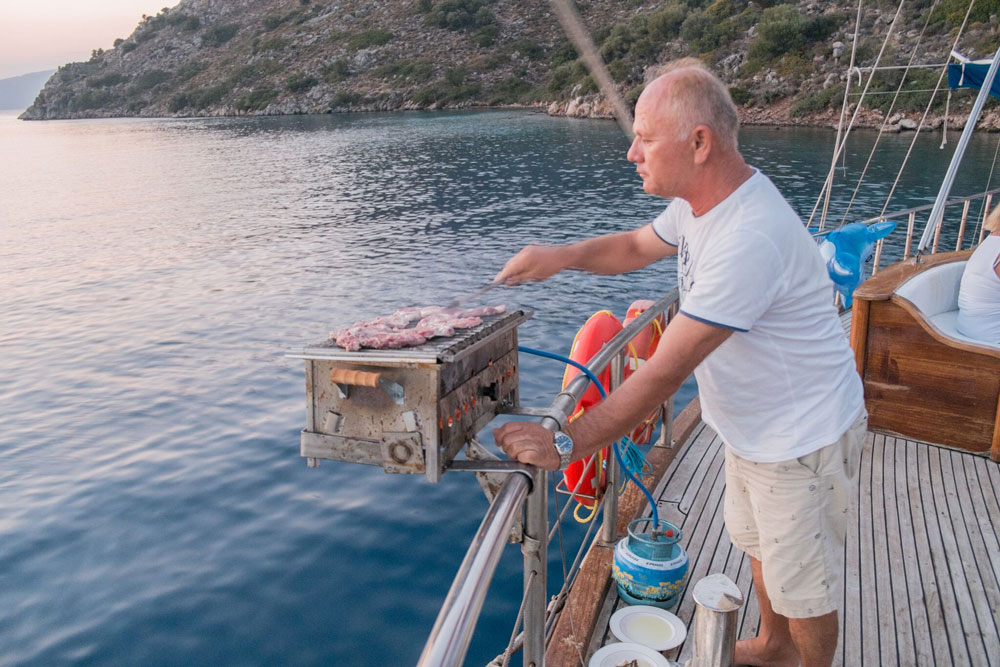
We sailed as far as Bozburun in one direction and then back up to Kas in the other. The expensive menus at restaurants in the ports couldn’t compete with the good food on board, so we rarely ate ashore. We shopped a lot, particularly for leather handbags and the ubiquitous Turkish towels. We also discovered a great place for linen clothes, a chain called Mudo. All in all, it was a trip that perfectly combined a bit of sophisticated shore exploration with the simple life on the ocean.
DIANA’S TRAVEL TIPS
MUST-SEE SIGHTS The many Roman ruins along the coastline, in the nearby hills, and even underwater on the shoreline. Visit bigger ports such as Fethiye, Bozburun and Kas.
SHOP UP A STORM Buy cotton and leather goods as these are cheaper
and better made than anything you’ll find at home.
WHAT TO PACK Pack light. No need for any warm clothes in summer.
PLANNING YOUR TRIP
WHEN TO GO July, August and September are the best times.
GETTING THERE Fly Turkish Airlines to Istanbul and take a domestic flight to Dalaman, then take a taxi to the coast. Alternatively, fly to London Heathrow and then from Gatwick to Dalaman on Ryanair.
CURRENCY The currency is the Turkish Lira. Prices are very similar to those in South Africa.
VISAS Visas for Turkey are free to South Africans, but must be obtained in advance on the Internet. evisa.gov.tr/en/apply
WEBSITES TO VISIT Gorkem Apart Otel gorkemapart.com and Kasapoglu Yachting kasapoglu-yachting.com

